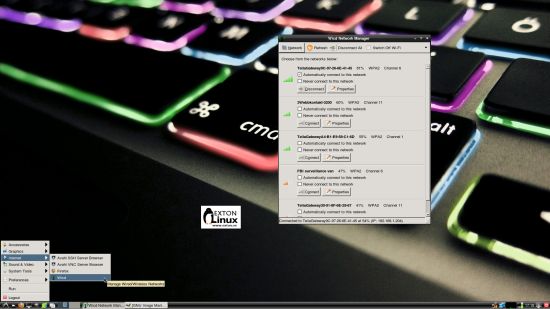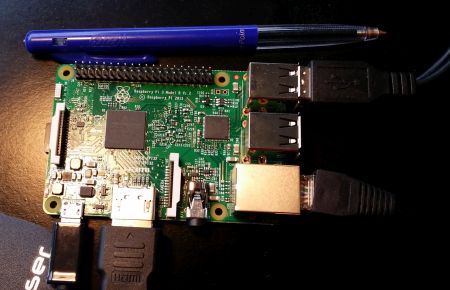 NEWS 160402
NEWS 160402
I discovered to my horror that Build 160331 of RaspEX didn’t have support for YouTube in Kodi. Many Add-ons (extensions) in Kodi are dependent on the YouTube Add-on. I therefore (of course) had to correct this error and upload a new version (160402) of RaspEX. While I was at it I took the opportunity to install some additional popular Music, Video and Picture Add-ons.
NEWS 160331: A new version of RaspEX especially built for the new Raspberry Pi 3 is ready
I have upgraded the whole system, replaced the old kernel, added support for Bluetooth and installed Kodi (XBMC) Media Center as an alternative to the LXDE Desktop.
The Raspberry Pi 3 is the third generation Raspberry Pi. It replaced the Raspberry Pi 2 Model B in February 2016.
Compared to the Raspberry Pi 2 it has:
A 1.2GHz 64-bit quad-core ARMv8 CPU
802.11n Wireless LAN
Bluetooth 4.1
Bluetooth Low Energy (BLE)
Raspberry Pi 3: How much better is it than the Raspberry Pi 2? Raspberry Pi 3 is performing 10 times faster than that of the Pi 1 and around 50 percent better than that of the Pi 2 according to testers.
NEWS 160402 ABOUT RaspEX
My previous version of RaspEX is from 160307. I have now upgraded the whole system, replaced the old kernel, added support for Bluetooth and installed Kodi (XBMC) Media Center as an alternative to the LXDE Desktop. RaspEX Build 160331 is a Linux ARM system for Raspberry Pi 3 and Pi 2. It is based on Debian Jessie (Debian 8.3), Ubuntu Wily Werewolf (Ubuntu 15.10, released 151022) and Linaro (Open Source software for ARM SoCs). In this new version (160402) I’ve installed Wicd Network Manager and replaced Chromium with Firefox with better support for YouTube. I have also installed Samba and VNC4Server so you can connect to your Windows computers in your Home Network and/or control RaspEX on your Raspberry Pi 3 or Pi 2 from your Windows computers with VNC Viewer and/or PuTTY (Telnet and SSH client). Furthermore some extra Network Tools and PulseAudio for better sound in YouTube.
How do I run Kodi?
You can just start Kodi from the menu while in the LXDE Desktop environment as the ordinary user raspex or as root. Then you can just start adding video and music Add-ons. I suggest that you also add a “Superrepo” – http://srp.nu. Please note that I have already installed some popular Add-ons in Build 160402.
View all installed packages in RaspEX – Build 160402
Screenshot of RaspEX’s Desktop while Wicd is running (for configuration of a wireless connection)
Screenshots showing additional popular Music, Video and Picture Add-ons in Kodi Media Center.







